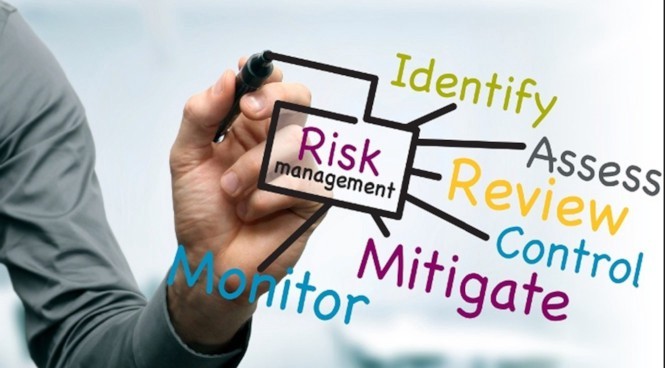
Recently Diagnosed or Relapsed? Stop Looking For a Miracle Cure, and Use Evidence-Based Therapies To Enhance Your Treatment and Prolong Your Remission
Multiple Myeloma an incurable disease, but I have spent the last 25 years in remission using a blend of conventional oncology and evidence-based nutrition, supplementation, and lifestyle therapies from peer-reviewed studies that your oncologist probably hasn't told you about.
Click the orange button to the right to learn more about what you can start doing today.
- You are here:
- Home »
- Blog »
- Multiple Myeloma »
- New Myeloma Staging- R2-ISS, MASS
New Myeloma Staging- R2-ISS, MASS

According to two new myeloma staging systems, multiple myeloma is about RISK. To be more specific, your diagnostic criteria all point to your risk of survival as well as your:
- Risk of relapse
- Risk of progression
- Risk of death
I am a long-term myeloma survivor myself. And let me tell you that I agree that managing MM is all about determining and then managing your RISK. And the importance of figuring out your level of risk as early in the process as possible.
How can you measure RISK in newly diagnosed multiple myeloma?
Measuring risk in newly diagnosed multiple myeloma involves assessing various factors to determine the prognosis and guide treatment decisions. Several tools and criteria are commonly used by healthcare professionals for risk stratification in multiple myeloma. Here are some key factors considered:
- Cytogenetics and Genetics:
- Chromosomal abnormalities and genetic mutations play a significant role in determining risk. High-risk cytogenetics, such as the presence of specific abnormalities like del(17p) or t(4;14), may indicate a poorer prognosis.
- Beta-2 Microglobulin (B2M) and Albumin Levels:
- Elevated levels of beta-2 microglobulin and low levels of albumin are associated with higher risk. These biomarkers are often included in prognostic scoring systems.
- International Staging System (ISS):
- The ISS is a widely used system that categorizes multiple myeloma into three stages based on serum beta-2 microglobulin and albumin levels. Higher stages indicate a worse prognosis.
- Revised International Staging System (R-ISS):
- Building on the ISS, the R-ISS incorporates additional factors such as cytogenetic abnormalities and lactate dehydrogenase (LDH) levels for a more refined risk assessment.
- Durie-Salmon Staging System:
- This staging system takes into account the extent of bone lesions, hemoglobin levels, calcium levels, and the presence of kidney dysfunction to determine the stage of multiple myeloma.
- Lactate Dehydrogenase (LDH) Levels:
- Elevated LDH levels are associated with a higher risk of progression and poorer outcomes.
- Age and Overall Health:
- Patient age and overall health are important considerations. Older age and the presence of comorbidities may impact treatment choices and overall prognosis.
- Response to Initial Therapy:
- The response to initial treatment is crucial in assessing risk. Poor response or early relapse may indicate higher risk.
- Minimal Residual Disease (MRD) Assessment:
- MRD testing is becoming increasingly important in evaluating treatment response. Achieving minimal residual disease negativity is associated with better outcomes.
- Other Laboratory and Clinical Parameters:
- Additional factors such as creatinine levels, hemoglobin levels, and the presence of bone lesions are considered in assessing risk.
If you’ve been diagnosed with MM then you’ve probably gone through a dizzying amount of diagnostic testing. Thought it is not fun to be stuck, scanned, poked, etc, etc. it is important for the NDMM patient to understand how far MM diagnostics have come and how the patient’s diagnostic information can:
- give you an accurate prognosis
- explain your risks in order to help you think through your therapy plan
- help you with your decision-making all the way around.
To be more specific and read world, understanding your stage and prognosis will help you decide how aggressive you want to be with your therapies. By this I mean that if you are say, early stage with a low MM burden, you can undergo less therapy, expose your body to less toxicity and risk few if any side effects.
On the other hand, if you have advanced and high-risk MM, you may decide to treat your blood cancer more aggressively
If you would like to think through your choices, stages, and risks, email me at David.PeopleBeatingCancer@gmail.com
In the meantime, hang in there-
David Emerson
- MM Survivor
- MM Cancer Coach
- Director PeopleBeatingCancer
New Multiple Myeloma Staging Systems Outperform the Standard
“Two proposed new multiple myeloma staging systems offer similar prognostic accuracy compared with the standard staging system, but the new systems provide more refined risk classifications across different disease stages…
Mohyuddin and his colleagues retrospectively compared the standard Revised International Staging System (R-ISS) with two newer systems, the Second Revision of the R-ISS (R2-ISS) and the Mayo Additive Staging System (MASS), using real-world data from nearly 500 patients with newly diagnosed multiple myeloma…
Second Revision of the International Staging System (R2-ISS) for Overall Survival in Multiple Myeloma
“Patients with newly diagnosed multiple myeloma (NDMM) show heterogeneous outcomes, and approximately 60% of them are at intermediate-risk according to the Revised International Staging system (R-ISS), the standard-of-care risk stratification model… In this study, we revised the R-ISS by analyzing the additive value of each single risk feature, including 1q+”
A simple additive staging system for newly diagnosed multiple myeloma
“Risk stratification in multiple myeloma is important for prognostication, patient selection for clinical trials, and comparison of treatment approaches. We developed and validated a staging system that incorporates additional FISH abnormalities not included in the R-ISS and reflects the additive effects of co-occurring high-risk disease features…
Among 1327 evaluable patients, OS was
- 11.0,
- 7.0, years
in patients with
- 0 (stage I),
- 1 (stage II),
- and ≥2 (stage III)
high-risk factors, respectively.

